Holiday Lights From The Universe
Holiday Lights from the Universe
Although there are no seasons in space, some cosmic vistas invoke thoughts of a frosty winter landscape. Here are a few stellar images of holiday wonderlands from across the galaxy…

Located in our galaxy about 5,500 light years from Earth, this region is actually a “cluster of clusters,” containing at least three clusters of young stars, including many hot, massive, luminous stars.

The outstretched “wings” of this nebula looks like a soaring, celestial snow angel. Twin lobes of super-hot gas, glowing blue in this image, stretch outward from the central star. This hot gas creates the “wings” of our angel. A ring of dust and gas orbiting the star acts like a belt, clinching the expanding nebula into an “hourglass” shape.

At this time of year, holiday parties often include festive lights. When galaxies get together, they also may be surrounded by a spectacular light show. This pair of spiral galaxies has been caught in a grazing encounter. This region has hosted three supernova explosions in the past 15 years and has produced one of the most bountiful collections of super-bright X-ray lights known.

What do the following things have in common: a cone, the fur of a fox and a Christmas tree? Answer: they all occur in the constellation of the unicorn (Monoceros). Pictured as a star forming region, the complex jumble of cosmic gas and dust is about 2,700 light-years away.

Resembling festive lights on a holiday wreath, this Hubble Space Telescope image of a nearby spiral galaxy is an iconic reminder of the impending season. Bright knots of glowing gas light up the spiral arms, indicating a rich environment of star formation.

The Hubble Space Telescope captured two festive-looking nebulas, situated so as to appear as one. Intense radiation from the brilliant central stars is heating hydrogen in each of the nebulas, causing them to glow red…like a holiday light.
Make sure to follow us on Tumblr for your regular dose of space: http://nasa.tumblr.com
More Posts from Nasa and Others
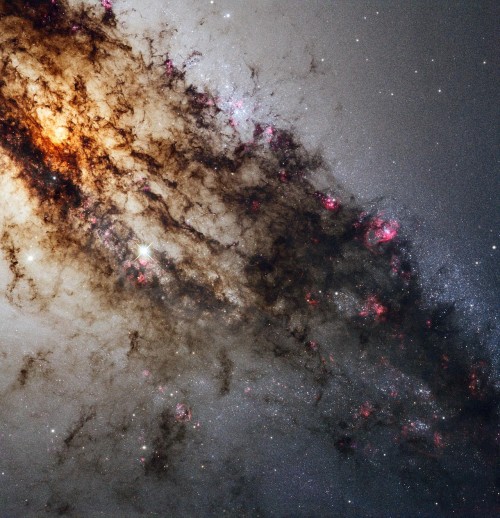
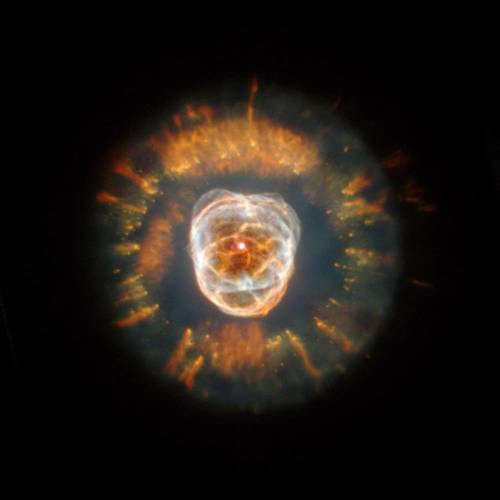
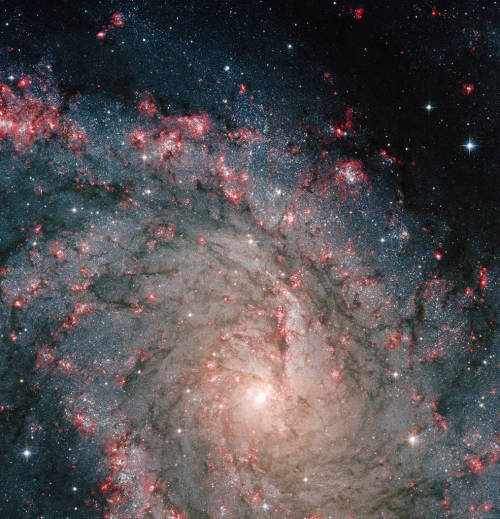
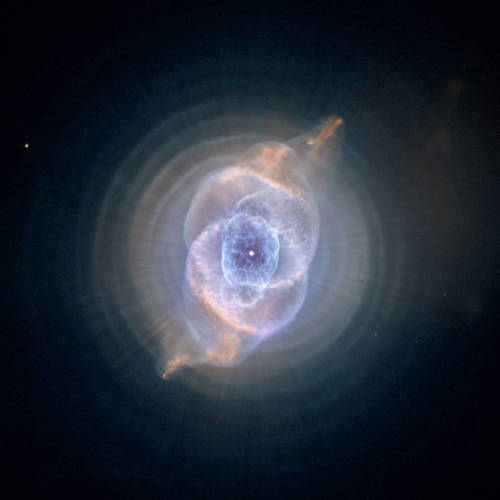
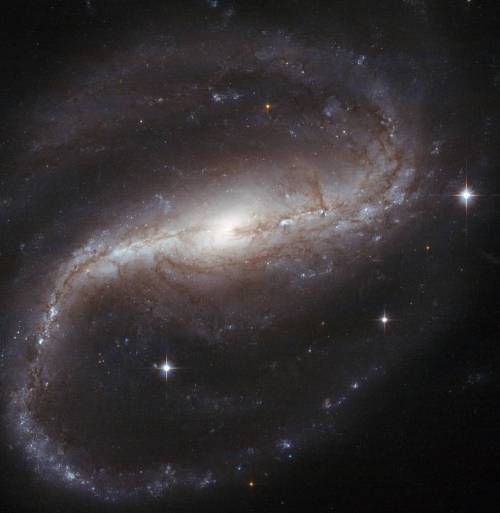
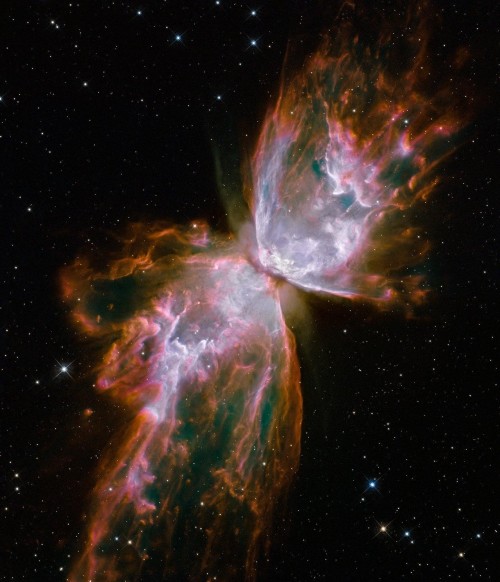

Be your own explorer ✨the cosmos is waiting...
From nearby clouds of gas and dust to remote galaxies that formed billions of years ago, tour the night sky with our Hubble Space Telescope’s new Caldwell catalog. The catalog of star clusters, galaxies and nebulas was first produced to highlight cosmic wonders visible to amateur astronomers. Since then Hubble has taken images of 95 out of the 109 objects, bringing these objects to life in exquisite detail.
While the objects can be observed using modest ground-based telescopes, Hubble’s Caldwell collection has been assembled for astronomers to see the finer details of each object in the night sky.
View the full collection here!
Make sure to follow us on Tumblr for your regular dose of space: http://nasa.tumblr.com.
Join NPR today at 5 p.m. EDT for #NPRSpaceJam with astronauts Serena Auñón, Cady Coleman, Samantha Cristoforetti, plus our chief scientist Ellen Stofan. Submit your questions!

Tomorrow at 5ET I’ll be interviewing three astronauts (read all about them here) live on Periscope and Snapchat (user: nprnews).
What would you like me to ask them? Submit questions here.
What Did Astronaut Scott Kelly Do After a #YearInSpace?
Astronaut Scott Kelly just returned from his One-Year Mission aboard the International Space Station. After spending 340 days on orbit, you can imagine that he started to miss a few Earthly activities. Here are a few things he did after his return home:
Watched a Sunset

While on the International Space Station for his One-Year Mission, astronaut Scott Kelly saw 16 sunrises/sunsets each day...so he definitely didn’t miss out on the beauty. That said, watching a sunset while on Earth is something that he had to wait to see. Tweet available HERE.
Ate Fresh Food

After spending a year on the International Space Station, eating precooked food, anyone would be excited to dig into a REAL salad. Astronaut Scott Kelly was no exception, and posted about his first salad on Earth after his one-year mission. Learn more about what astronauts eat while in space HERE. Tweet available HERE.
Jumped into a Pool

Water is a precious resource in space. Unfortunately, that means that there isn’t a pool on the space station. Luckily, astronaut Scott Kelly was able to jump into some water after his return to Earth. Tweet/video available HERE.
Sat at a Dinner Table

While living on the International Space Station, crew members regularly enjoy their meals together, but do so while floating in microgravity. The comfort of pulling up a chair to the dinner table is something they can only experience once they’re back home on Earth. Tweet available HERE.
Enjoyed the Weather

When crew members live on the space station they can’t just step outside for a stroll. The only time they go outside the orbiting laboratory is during a spacewalk. Even then, they are confined inside a bulky spacesuit. Experiencing the cool breeze or drops of rain are Earthly luxuries. Tweet available HERE.
Stopped by the Doctor’s Office

The One-Year Mission doesn’t stop now that astronaut Scott Kelly is back on Earth. Follow-up exams and tests will help scientists understand the impacts of microgravity on the human body during long-duration spaceflight. This research will help us on our journey to Mars. Tweet available HERE.
Visited the Denist

When you spend a year in space, you’ll probably need to catch up on certain things when you return to Earth. Astronaut Scott Kelly made sure to include a visit to the dentist on his “return home checklist”. Tweet available HERE.
Make sure to follow us on Tumblr for your regular dose of space: http://nasa.tumblr.com
How could your research in diseases help missions to the Moon, Mars and other places in our solar system?
Seven Reasons Why Rover Challenge is Serious Business
Prizes, awards and a year’s worth of bragging rights are at stake during our annual Human Exploration Rover Challenge. Year after year, student teams from across the world design, build and race rovers against the clock and each other.
With a space-themed obstacle course, unique rovers, competitive racing, our exhibits and dozens of international teams… it’s everything cool about STEM (science, technology, engineering and mathematics) and space exploration.
Here are the “must-know” details for this year’s event:
1. Bumps, Bruises and Battle Scars

Our space-themed obstacle course often brings racers to their knees, literally. This daunting three-quarter-mile long course is difficult to traverse and isn’t for the faint of heart. It uses both lunar and Mars-themed obstacles to simulate the types of terrain found on distant planets, asteroids or moons.
Plus, teams must race their rovers in, on and around full-scale rockets and space vehicle exhibits on display at the U.S. Space & Rocket Center – the official visitor center for NASA’s Marshall Space Flight Center, both in Huntsville, Alabama. See just how difficult and wild the course can be in our Flickr gallery.
2. Homemade Wheels Only

Rover teams must design and fabricate their own original, or “homemade” wheels. In-Situ Resource Utilization is an important component for our future missions to Mars, asteroids or other planets.
Astronauts can never simply purchase wheels at the store… and neither can our rover teams. Teams must not use any “off-the-shelf” wheels on their rover. By wheels, this means any component used for contact, traction or mobility on the surface of the obstacle course, including, but not limited to wheels, tracks, treads or belts.
And, as in years past, teams are not allowed to incorporate inflated (or un-inflated) pneumatic tires. Inflated tires would be considered an off-the-shelf product, not eligible under the current rules.
3. New “Sample Retrieval” Component Added

Teams may choose to compete in this optional challenge, collecting four samples (liquid, small pebbles, large rocks and soil) using a mechanical arm or a grabber they design and build. Teams must collect a soil sample and liquid sample while driving their rover, as well as collect rock samples (both large and small) while off the rover, all within a 25-minute time limit. The “Sample Retrieval” challenge highlights our deep-space exploration goals. Teams competing are eligible for the $250 prize awarded to the winner of each high school and college/university division.
4. Caution: Real STEM @work

The sights and sounds of welding, grinding and computer programming are prevalent in this hands-on, experiential activity where students solve similar problems faced by our workforce. Rover Challenge provides a unique test-bed to get students involved in real-world research and development. Their progress and success may glean potential technologies for future exploration of Mars and beyond.
5. Draws Inspiration from Apollo and Journey to Mars

Rover Challenge was inspired by the historic success of the lunar rovers from the Apollo missions, each one built by engineers and scientists at NASA Marshall. While we continue to honor our past achievements, we now highlight future accomplishments on deep-space exploration missions to Mars, asteroids or other planets. The addition of the “Sample Return” component and the Martian obstacles emphasize our commitment toward space exploration.
6. Our International Spirit is Alive and Well

Just like the International Space Station; we bring the best of several nations together to promote and celebrate space exploration. Nearly 80 teams are coming from as far away as Italy, Germany, India, Mexico, Columbia and Russia, as well as more “local” talent from the United States and Puerto Rico. View this year’s registered teams HERE.
7. Real-time Racing on Social Media

From start to finish, each racing rover team will be broadcast, live, on the Marshall Center’s Ustream channel. Plus, enjoy real-time race updates, results and awards by following Rover Challenge Twitter: @RoverChallenge
NASA’s Human Exploration Rover Challenge will take place at the U.S. Space & Rocket Center in Huntsville, Alabama, April 8-9. For event details, rules, course information and more, please visit: http://www.nasa.gov/roverchallenge
Make sure to follow us on Tumblr for your regular dose of space: http://nasa.tumblr.com
Everything You Need to Know About the Aug. 21 Eclipse
On Aug. 21, all of North America will experience a solar eclipse.

If skies are clear, eclipse-watchers will be able to see a partial solar eclipse over several hours, and some people – within the narrow path of totality – will see a total solar eclipse for a few moments.
How to Watch
It’s never safe to look at the Sun, and an eclipse is no exception. During a partial eclipse (or on any regular day) you must use special solar filters or an indirect viewing method to watch the Sun.

If you have solar viewing glasses, check to make sure they’re safe and undamaged before using them to look at the Sun. Make sure you put them on before looking up at the Sun, and look away before removing them. Eclipse glasses can be used over your regular eyeglasses, but they should never be used when looking through telescopes, binoculars, camera viewfinders, or any other optical device.
If you don’t have eclipse glasses, you can still watch the eclipse indirectly! You can make a pinhole projector out of a box, or use any other object with tiny holes – like a piece of cardstock with a hole, or your outstretched, interlaced fingers – to project an image of the partially eclipsed Sun onto the ground.

Of course, if it’s cloudy (or you’d just rather stay inside), you can watch the whole thing online with us at nasa.gov/eclipselive. Tune in starting at noon ET.
If you’re in the path of totality, there will be a few brief moments when it is safe to look directly at the eclipse. Only once the Moon has completely covered the Sun and there is no light shining through is it safe to look at the eclipse. Make sure you put your eclipse glasses back on or return to indirect viewing before the first flash of sunlight appears around the Moon’s edge.

Why do eclipses happen?
A solar eclipse happens when the Moon passes directly between the Sun and Earth, casting its shadow down on Earth’s surface. The path of totality – where the Moon completely covers the Sun – is traced out by the Moon’s inner shadow, the umbra. People within the Moon’s outer shadow, the penumbra, can see a partial eclipse.

The Moon’s orbit around Earth is tilted by about five degrees, meaning that its shadow usually doesn’t fall on Earth. Only when the Moon lines up exactly between the Sun and Earth do we see an eclipse.

Though the Sun is about 400 times wider than the Moon, it is also about 400 times farther away, making their apparent sizes match up almost exactly. This is what allows the Moon to block out the Sun’s bright face, while revealing the comparatively faint, pearly-white corona.
The Science of Eclipses
Eclipses are a beautiful sight to see, and they’re also helpful for our scientists, so we’re funding eleven ground-based science investigations to learn more about the Sun and Earth.

Total solar eclipses reveal the innermost regions of the Sun’s atmosphere, the corona. Though it’s thought to house the processes that kick-start much of the space weather that can influence Earth, as well as heating the whole corona to extraordinarily high temperatures, we can’t study this region at any other time. This is because coronagraphs – the instruments we use to study the Sun’s atmosphere by creating artificial eclipses – must cover up much of the corona, as well as the Sun’s face in order to produce clear images.

Eclipses also give us the chance to study Earth’s atmosphere under uncommon conditions: the sudden loss of solar radiation from within the Moon’s shadow. We’ll be studying the responses of both Earth’s ionosphere – the region of charged particles in the upper atmosphere – and the lower atmosphere.
Learn all about the Aug. 21 eclipse at eclipse2017.nasa.gov, and follow @NASASun on Twitter and NASA Sun Science on Facebook for more. Watch the eclipse through the eyes of NASA at nasa.gov/eclipselive starting at 12 PM ET on Aug. 21.
Make sure to follow us on Tumblr for your regular dose of space: http://nasa.tumblr.com
5 Signs You Might Be Ready to Apply to be an Astronaut
Did you hear? Astronaut applications are open! Here are a few signs that might mean you’re ready to apply:
1. You Don’t Mind Having Roommates

When you’re an astronaut, you have to work and live with your crew mates for extended periods of time. It’s important to the mission and your safety that everyone can collaborate and work together.
2. You LOVE Space

If the Milky Way, planets and space travel doesn’t excite you then this might not be the perfect job for you. But if you love galaxies, space station research and deep space exploration, then maybe you should take a look at our application.
3. Adventure Doesn’t Scare You

Being an astronaut means that you get to take part in adventures that most people will never experience. Imagine: sitting on the launch pad in the Orion spacecraft, atop a rocket that’s getting ready to launch. You’ll travel farther into space than any other humans have been and help push the boundaries of technology in the proving ground of deep space lunar orbits, leading the way for future missions to Mars.
4. You Want to be on the Cutting Edge of Science

Not only do astronauts get to travel to space, but they also get to conduct really cool research in microgravity. Did you know that right now they’re growing Zinnia flowers on the International Space Station? This research could help with our future deep space exploration and could teach us a few things about growing plants on Earth. Learn more about all the awesome research on the space station HERE.
5. You’re Not Afraid of Heights

One of the coolest things about being an astronaut, is that you get to go to SPACE! At the very least, you’ll travel to the International Space Station, which is 250 miles above Earth. Or, you could be one of the first astronauts to travel to a distant asteroid or even Mars!
Interested in applying to become an astronaut? You’re in luck, applications open Dec. 14! Learn about some common myths about becoming an astronaut HERE.
Apply to be one of our astronauts HERE.
Make sure to follow us on Tumblr for your regular dose of space: http://nasa.tumblr.com

Mohammad AlMulla
Mohammad AlMulla, born in Dubai, received his commercial pilot's license from Australia at the age of 19. AlMulla was a training lead with the Dubai Police before becoming an astronaut candidate for the United Arab Emirates. https://mbrsc.ae/team/mohammed_mulla/
Make sure to follow us on Tumblr for your regular dose of space!
Solar System: Things To Know This Week
Weather permitting, you can observe the Moon most nights, unless it's a new moon, when the lighted side of the Moon faces away from Earth. The Moon is by far the brightest object in the night sky and there's plenty to see. But this week is special...

...October 28 is International Observe the Moon Night (also known as InOMN).
Here's all you need to know to join in and celebrate:
1. One Planet. One Moon. One Night.

Everyone on Earth is invited to join the celebration by hosting or attending an InOMN event and uniting on one day each year to look at and learn about the Moon together.
2. What's Up?

October's night skies are full of sights, from the first quarter Moon on InOMN to Saturn making a cameo appearance above the Moon October 23 and 24. Watch our What's Up video for details.
3. Be Social

Hundreds of events are planned around the globe. Click the top link on this page for a handy map. You can also register your own event.
4. Don't Just Stand There

Here are some activities for enhanced Moon watching.
5. Impress Your Friends with Moon Knowledge

Download InOMN flyers and handouts, Moon maps and even some pre-made presentations. There's even a certificate to mark your participation.
6. Guide to the Face of the Moon

Almost dead center on the Earth-facing side of the Moon is the Surveyor 6 robotic spacecraft impact side. Apollo 12 and 14 are a bit to the left. And Apollo 11 - the first steps on the moon - are to the right. This retro graphic tells the whole story.
7. Moon Shots

NASA photographers have done some exceptional work capturing views of the Moon from Earth. Here are a few galleries:
You can't have a solar eclipse without the Moon.
The 2016 "Supermoon" was pretty spectacular.
The Moon gets eclipsed, too.
That IS a Moon - AND the International Space Station.
The Moon is always a great photo subject.
Some spooky shots of the 2014 "Supermoon."
And 2013.
Tips from a NASA pro for photographing the Moon.
8. Walking on the Moon

Twelve human beings walked on the face of the Moon. Here are some of the best shots from the Apollo program.
9. Moon Watch

Our Lunar Reconnaissance Orbiter is up there right now, mapping the moon and capturing some spectacular high-resolution shots.
10. Keep Exploring

Make our Moon portal your base for further lunar exploration.
Check out the full version of ‘Ten Things to Know This Week’ HERE.
Make sure to follow us on Tumblr for your regular dose of space: http://nasa.tumblr.com.

Meet America’s new astronauts! These 12 humans have been selected as part of our 2017 astronaut class and will report for duty at our Johnson Space Center in August.
Get to know each of them here: https://nasa.tumblr.com/post/161552645129/meet-americas-newastronauts
-
 suncloudess reblogged this · 3 years ago
suncloudess reblogged this · 3 years ago -
 beautifulchaosallacross reblogged this · 5 years ago
beautifulchaosallacross reblogged this · 5 years ago -
 lexxhearts liked this · 5 years ago
lexxhearts liked this · 5 years ago -
 xnzda reblogged this · 5 years ago
xnzda reblogged this · 5 years ago -
 nctzarchive liked this · 6 years ago
nctzarchive liked this · 6 years ago -
 fallenphoenix liked this · 6 years ago
fallenphoenix liked this · 6 years ago -
 analgesicsleep reblogged this · 6 years ago
analgesicsleep reblogged this · 6 years ago -
 museofspace-221b-baker-st-t-blog reblogged this · 6 years ago
museofspace-221b-baker-st-t-blog reblogged this · 6 years ago -
 annad58 liked this · 7 years ago
annad58 liked this · 7 years ago -
 bibliophilea liked this · 7 years ago
bibliophilea liked this · 7 years ago -
 mercurysowntwenty-two liked this · 7 years ago
mercurysowntwenty-two liked this · 7 years ago -
 analgesicsleep reblogged this · 7 years ago
analgesicsleep reblogged this · 7 years ago -
 liptonrm reblogged this · 7 years ago
liptonrm reblogged this · 7 years ago -
 glitchtechscience reblogged this · 7 years ago
glitchtechscience reblogged this · 7 years ago -
 cozmicclockwork liked this · 7 years ago
cozmicclockwork liked this · 7 years ago -
 dinosaurdame liked this · 7 years ago
dinosaurdame liked this · 7 years ago -
 mckitterick reblogged this · 7 years ago
mckitterick reblogged this · 7 years ago -
 steffirah reblogged this · 7 years ago
steffirah reblogged this · 7 years ago -
 steffirah liked this · 7 years ago
steffirah liked this · 7 years ago -
 drawn-apart liked this · 7 years ago
drawn-apart liked this · 7 years ago -
 musicsoundsbetterthanyourvoice liked this · 7 years ago
musicsoundsbetterthanyourvoice liked this · 7 years ago -
 sunreep reblogged this · 7 years ago
sunreep reblogged this · 7 years ago -
 selachiihook liked this · 7 years ago
selachiihook liked this · 7 years ago -
 herokind-archive reblogged this · 7 years ago
herokind-archive reblogged this · 7 years ago -
 nomaian reblogged this · 7 years ago
nomaian reblogged this · 7 years ago -
 pachimew reblogged this · 7 years ago
pachimew reblogged this · 7 years ago
Explore the universe and discover our home planet with the official NASA Tumblr account
1K posts